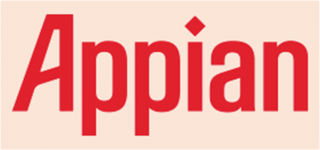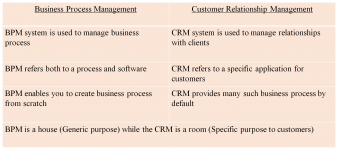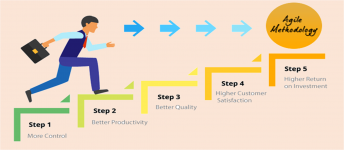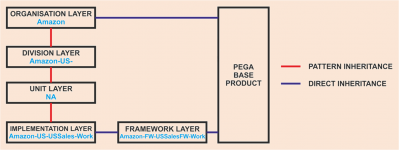Pega Basic Interview Questions and Answers Part 2
1. What are tools similar to Pega? (or)
What are the tools Alternatives to Pega Platform?





2.What is DevOps?
DevOps is a culture of collaboration within an organization between development, quality assurance, and operations teams that strives to improve and shorten the organization's software delivery life cycle
Pega Platform offers tools to support DevOps
3.Give a one example of DevOps?
A Wall between development and operations often results in an environment where the two teams don't trust each other and each is walking around a little blindly
A DevOps approach results in a collaboration between the two teams where they work with a shared passion to achieve common goals
4.What is BPM?
Business Process Management is a methodology to manage processes and workflows in an organization
The goal of BPM is to increase efficiency, Performance, & agility in the day-to-day operations of a business
Example: world’s leading airlines utilize BPM to manage flight schedules and terminal operations
5.What is the difference between BPM and CRM systems?

6.What is Agile methodology?
Agile methodology is a way to manage a project by breaking it up into several phases
Each iteration of Agile methodology takes a short time interval of 1 to 4 weeks
7.What are the benefits of using Agile methodology?

8.What is Scrum theory?
Scrum is an Agile framework that can help teams work together
Scrum can enable teams to learn from experiences, self-organize while working on problems, to reflect on their victories and failures, to make improvements
9. What is Integration ?
Most applications require access to data or computations that are provided by another system or applications
The approaches, Technologies, and Facilities that support accessing data are collectively known as Integration
10.Explain about Enterprise Class Structure?
The Enterprise Class Structure is an out-of-the-box class structure that provides a foundation for reuse

11.What are the Layers in Enterprise Class Structure?
Organisation Layer
Division Layer
Unit Layer
Framework Layer
Implementation Layer
12.Explain any example of Organisation, Division, Unit layers?

13.Explain about Framework and Implementation layer?
Framework layer contains assets that can be extended in specific implementations
The framework layer may be comprised of one or more generalized applications, such as a standard Pega application for a specific industry, or an extendable custom application
Implementation layer defines an application customized for a specific division or line of business
An implementation layer application may extend one or more framework layer applications
Example, a clothing retailer consists of two brands of stores. One brand focuses on the upscale clothing market, while the other brand runs a value-oriented chain of stores. Each brand needs to manage item returns. The retailer can develop a generalized application that manages clothing returns in the framework layer. Each brand can then create its own implementation layer to customize the returns process
14.What are the types of Inheritance?
- Pattern Inheritance
- Directed Inheritance
15.What is Pattern Inheritance?
Pattern Inheritance describes the business relationship between classes
Pattern Inheritance allow your application to share rules with other application through out an organization
Pattern inheritance causes a class to inherit rules first from classes that match a prefix of the class name
16.What is Directed Inheritance?
Directed Inheritance describes the functional relationship between classes
Directed inheritance is the method by which a class inherits characteristics directly from a specified parent class, regardless of any defined pattern inheritance
17.What is Case type?
A case type is a visual representation of your business process
It is a template for work that you can reuse for multiple instances of your business process
18.What is Case?
A case essentially represents work that an organization performs to achieve an outcome
Example: Processing an auto-insurance claim or opening a new bank account is a critical piece of work that needs to be done to deliver a resolution to a customer
19.What are the other names of Case?
Work object
Case type instance
Work type instance
20.What is Debugging tool?
Debugging tools are used to identify coding errors at various development stages
They are used to reproduce the conditions in which error has occurred, then examine the program state at that time and locate the cause
21.What are the debugging tools available in Pega?
Clipboard
Tracer
TracerViewer
PAL (Performance Analyzer)
PLA (PegaRULESLogAnalyzer)
SMA (System Management Application)
Remote Tracing
Logs, Alert log files
DataBase Trace
22.What is a Tracer?
Tracer is used to capture and view the complete log of the events that occur during the case processing
This can help to identify the root cause of errors
23.Which tool is used to track the errors?
Tracer tool
24.What is Blob?
Blob (binary large object) is used for data storage in Pega application
Pega Applications store each case as a unique record in a Blob database
25.What are the advantages of using Blob?
Unlimited storage size
Flexibility
High performance
26.Why do we need to optimize property before we can use it in report definition column?
Extracting data directly from a BLOB reduce the performance
When you optimize a property, Pega creates a separate column for the property in a database table
When a case or report uses an optimized property, Pega Reads from that Separate column rather than the Blob column
27.What are the Advantages of Property Optimization?
Reduce the Time to run the application
Save the Application Memory
Increase the Application Performance
Decompressing does not occur
28.What is Datatype?
Data types represent key business entities, such as Customers & Products
Data types are used to define an class and contain all the fields necessary to describe its structure
For example, an identifier, name, address, and date of account creation describe a customer
29.What is escalation action?
You can define an escalation action, such as notifying a manager, that is run when an assignment is past due
By reacting to assignments that exceed their goal or deadline times, you can reduce the risk of unfinished work in a case
30.Which tool is used to display the declarative rules that are present in the application?
Declarative Network Analysis tool
Last edited:
